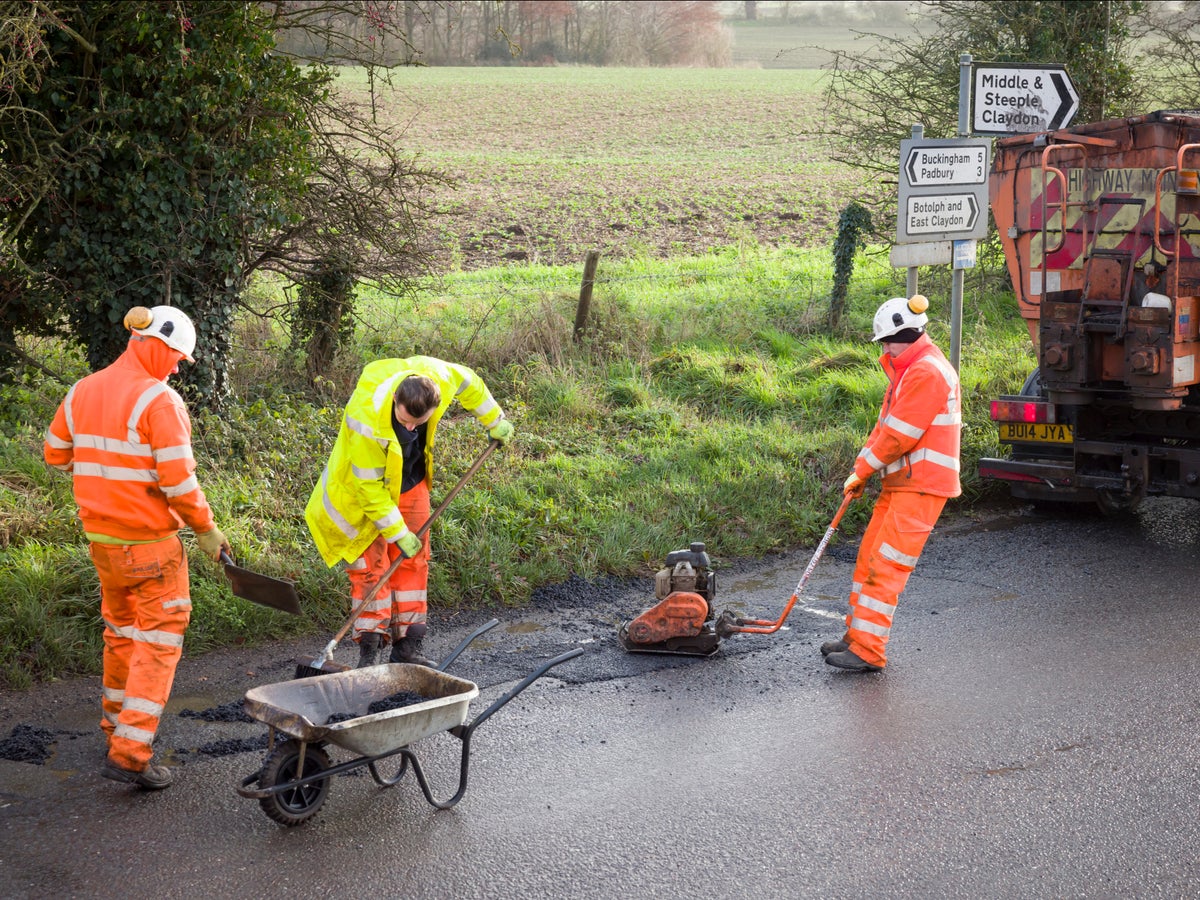
The 10 worst locations for potholes in England have been revealed in a new analysis of local authority data.
Research carried out by Compare the Market found that Bristol’s roads were in the worst condition, with nearly four out of every five roads requiring maintenance.
Despite a vast proportion of roads being damaged across the country, current plans show that just 0.4 per cent of England’s road network will receive strengthening, resurfacing, or surface dressing treatment by April, the research found.
The condition of roads varies drastically across the country, with cash-strapped local authorities responsible for repairs on most roads outside the remit of National Highways, which bears responsibility for motorways and A roads.
Highlighting the large disparity in the state of England’s roads, Devon came in at 10th on the list, with 38 per cent of the region’s roads requiring repair.
This was in stark contrast to Bristol, where 78.5 per cent of roads were damaged, followed by Blackburn with Darwen (76 per cent), Cheshire West and Chester (72 per cent), Derbyshire (71 per cent) and Knowlsey (64 per cent).
Conversely, motorists in Redcar and Cleveland enjoyed the best roads in the country, with just 9.5 per cent of its network needing repairs.
It was followed closely by Stockton-on-Tees (12 per cent) and Leeds (12.5 per cent).
Despite Redcar and Cleveland having the lowest proportion of roads needing improvement, there are still plans to improve 5.4km of roads over the next month. This is more than what has been planned for Bristol, even though road conditions in that area are considerably worse, the research found.
Drivers were warned in January to expect a surge in potholes due to the large amount of rain that fell either side of December’s freezing temperatures, as another Arctic blast plunges the UK into some of the coldest March conditions since 2010 this week.
Potholes are formed as water which has entered cracks in the road expands when frozen, prompting the RAC’s warning that December’s weather had created “the perfect recipe for potholes to start peppering the roads”.
The RAC responded to an average of 20 call-outs a day for faults such as damaged shock absorbers, broken suspension springs and distorted wheels between October and December last year – up from 16 a day during the previous three months.
The research ranking local authorities determined the percentage of roads needing improvement as those listed as “red” (where further investigation is required to ascertain if work is needed immediately) and “amber” (may need work sometime soon) in the Department for Transport’s latest road condition statistics. Local authorities for which one or more data points were missing were not included.
“Potholes are the bane of every driver’s life. Not only are they a road safety hazard, they can also cause significant damage to your car if you hit one,” said Julie Daniels, a motor insurance expert at Compare the Market.
“You can make a claim for pothole damage from the council or authority responsible for maintaining the road where the pothole was or you can make a fault claim on your car insurance if you have fully comprehensive cover.
“Nevertheless, more investment is needed to fix Britain’s disintegrating roads and help keep drivers safe.”







